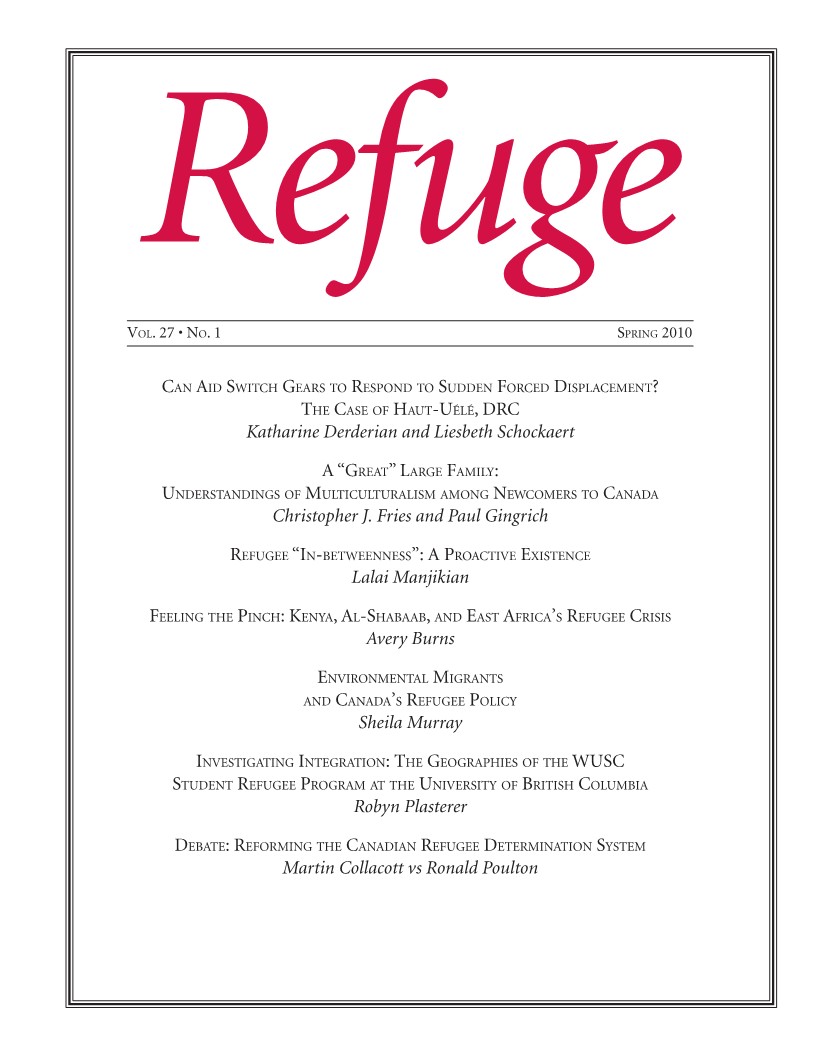Feeling the Pinch: Kenya, Al-Shabaab, and East Africa’s Refugee Crisis
DOI:
https://doi.org/10.25071/1920-7336.34356Keywords:
Kenya, East Africa, Somali refugees, Al-Shabaab, geopolitics, refugee camps, national security, terrorismAbstract
Kenya currently hosts over four hundred thousand refugees.In the last two decades it has turned towards a policy of containment in an attempt to confine refugees to its two rural camps, Kakuma and Dadaab. Kenya’s tolerance forthe ongoing refugee problem which peaked in the 1990s due to major conflicts in the region is waning and concurrently issues of national security are growing. The Somali armed faction, Al-Shabaab, has been reportedly infiltrating Kenya’s Somali refugee community. Recently, there have been reports that the government of Kenya has been covertly recruiting Somali refugees to return to Somalia to fight against Al-Shabaab. The use of refugees by Kenya to counter the threat of Al-Shabaab demonstrates a new perception of outside threats and suggests that Kenya is now willing to sacrifice ideals of humanitarianism to secure its border with Somalia. The border remains officially closed but thousands of refugees fleeing the violence in Somalia continue to pour into Kenya.
To understand why Kenya is taking such a hardened stance towards refugee populations, it is important to comprehend Kenya’s strategic importance in East Africa.Secondly, in the complex relationship between internal factors and international pressures, one can discern the friction between adhering to the human rights of refugees whilst remaining a global player in the war on terror. A comparison of Kenya’s past treatment of refugees to its present position suggests that the nation’s most significant priority is national security, and not remaining a haven for humanitarianism.
Metrics
Downloads
Published
How to Cite
Issue
Section
License
Copyright (c) 2011 Avery Burns

This work is licensed under a Creative Commons Attribution-NonCommercial 4.0 International License.
Refuge authors retain the copyright over their work, and license it to the general public under the Creative Commons Attribution-Non Commercial License International (CC BY-NC 4.0). This license allows for non-commercial use, reproduction and adaption of the material in any medium or format, with proper attribution. For general information on Creative Commons licences, visit the Creative Commons site. For the CC BY-NC 4.0 license, review the human readable summary.







